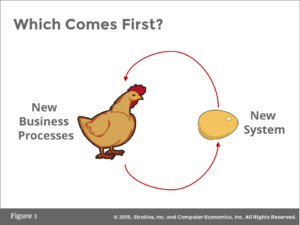 I have often been asked to step into projects where the industry or software are unfamiliar to me. More times than not, the project team has been hesitant at first. A common sentiment towards project managers of many technical resources I’ve encountered is disdain. After a while, the team gets used to working with me and figures out how I can help. In many cases, I’ve changed the opinions of project managers for these technical resources. But why is that? What is it about my approach to managing data and software implementation projects that enables me to step into any project at almost any stage and help deliver results?
I have often been asked to step into projects where the industry or software are unfamiliar to me. More times than not, the project team has been hesitant at first. A common sentiment towards project managers of many technical resources I’ve encountered is disdain. After a while, the team gets used to working with me and figures out how I can help. In many cases, I’ve changed the opinions of project managers for these technical resources. But why is that? What is it about my approach to managing data and software implementation projects that enables me to step into any project at almost any stage and help deliver results?
- Willingness to learn – I am willing to learn. I know when to shut up & listen, take notes and ask later. I try to read the materials I’m provided, and if relevant, find external sources. I follow up with questions and try to make connections but acknowledging that I could have missed something.
- General understanding of technology – I have a fairly good understanding of software development, database, data, workflow, process methodologies that gives me a foundation of understanding.
- Resources – I’ve been lucky enough to have worked or socialized with a number of very smart people across a broad range of disciplines. I’m able to engage with my network on an as needed basis.
- Know what you don’t know – It is imperative that I admit when I don’t know something. I need to engage with the right people at the right time, but yet recognize the dynamics of the situation and adapt accordingly.
I don’t think you do need to be a system expert to successfully manage an implementation project. I think you can develop enough of what you need to know to get involved to the extent you can. You’ll obviously need to adjust your level of engagement, and rely on your project team for the software expertise. You also need to know enough about the project and system to call bullshit when you need to.





 We are often reminded that words should be deliberate, and that sometimes words can hurt. In project management, these are applicable. More importantly, we need to be very conscious of the image that our words present. New projects are often opportunities to deepen the customer relationship. If all project stakeholders aren’t careful about the language they use, the customer or team can get the wrong impression.
We are often reminded that words should be deliberate, and that sometimes words can hurt. In project management, these are applicable. More importantly, we need to be very conscious of the image that our words present. New projects are often opportunities to deepen the customer relationship. If all project stakeholders aren’t careful about the language they use, the customer or team can get the wrong impression.

